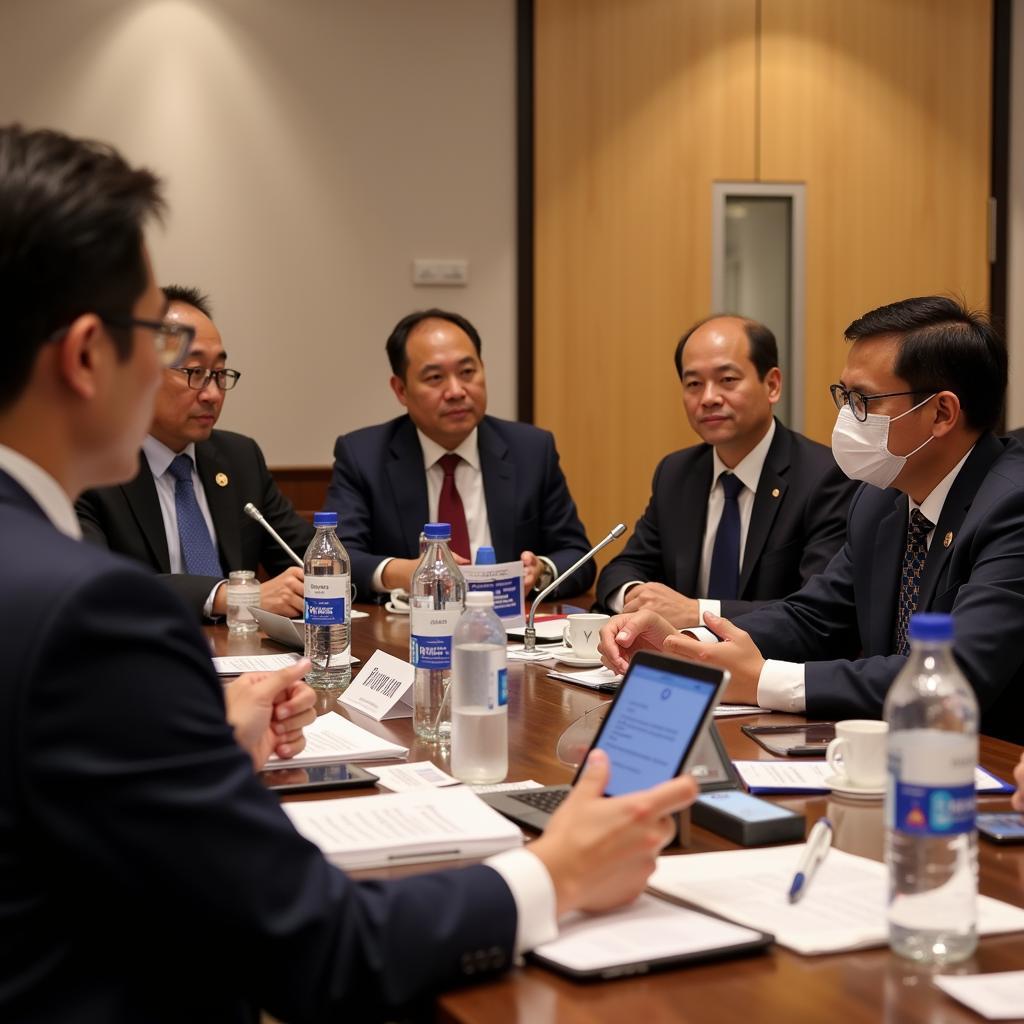Southeast Asia, a region known for its vibrant cultures and booming economies, relies heavily on international trade. Understanding the import landscape of each ASEAN member state provides valuable insights into their economic activities, consumer demands, and development priorities. So, what products does each ASEAN country import? Let’s delve into the unique import profiles of the ASEAN nations.
Brunei: Fueling Its Economy
Brunei, a small but wealthy nation, relies heavily on imports to meet its domestic needs. Its top imports include machinery, transport equipment, manufactured goods, food, and chemicals. The country’s dependence on oil and gas exports makes it a significant importer of refined petroleum products.
Cambodia: Garment Industry and Beyond
Cambodia’s economy is driven by garment manufacturing, tourism, and agriculture. Its primary imports are textiles, fabrics, vehicles, and petroleum products. The country also imports machinery and equipment to support its growing construction and infrastructure development sectors.
Indonesia: A Diverse Import Portfolio
As Southeast Asia’s largest economy, Indonesia imports a wide array of products. Its top imports include machinery, electrical equipment, chemicals, fuels, and iron and steel. The country’s growing manufacturing sector fuels the demand for these imported goods.
Laos: Infrastructure Development and Consumer Goods
Laos, a landlocked nation, heavily relies on imports to support its economic growth. Its key imports include machinery, vehicles, fuel, consumer goods, and construction materials. The country’s focus on infrastructure development and rising consumer spending drives the demand for these products.
Malaysia: Electronics, Chemicals, and More
Malaysia, a major player in the global electronics and manufacturing industries, imports a diverse range of goods. Its primary imports include electronics, chemicals, machinery, petroleum products, and plastics. These imports support its manufacturing sector, which is a key driver of its economy.
Myanmar: Fueling Growth and Development
Myanmar’s import profile reflects its developing economy and growing industries. Its top imports include petroleum products, machinery, vehicles, construction materials, and consumer goods. The country’s efforts to modernize its infrastructure and meet rising consumer demands drive its import needs.
Philippines: Electronics, Machinery, and Food
The Philippines, known for its electronics assembly and business process outsourcing industries, heavily relies on imports. Its major imports include electronics components, machinery, transport equipment, food products, and chemicals.
Singapore: A Global Trading Hub
As a global trading hub, Singapore imports a vast array of products for re-export and domestic consumption. Its top imports include refined petroleum, electronics, machinery, pharmaceuticals, and chemicals. The country’s strategic location and efficient logistics infrastructure make it a major import destination.
Thailand: Manufacturing Powerhouse
Thailand, a manufacturing powerhouse, imports a significant amount of raw materials and intermediate goods. Its major imports include machinery, electronics, chemicals, crude oil, and iron and steel. These imports support its automotive, electronics, and petrochemical industries.
Vietnam: Manufacturing and Consumer Demand
Vietnam’s import profile reflects its position as a manufacturing hub and its growing consumer market. Its top imports include machinery, electronics, fabrics, telephones, and steel. The country’s burgeoning manufacturing sector and rising disposable incomes fuel import demand.
Conclusion: A Region Integrated Through Trade
Understanding the import landscape of each ASEAN country offers valuable insights into their economic priorities and interconnectivity. As ASEAN continues to promote regional integration and economic cooperation, trade between these nations will continue to flourish, further shaping the economic landscape of Southeast Asia.


